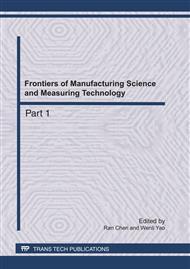p.605
p.610
p.616
p.620
p.625
p.629
p.634
p.639
p.644
Combination with Machine Learning Algorithms for the Classification in E-Bussiness
Abstract:
E-bussiness has grown rapidly in the last decade and massive amount of data on customer purchases, browsing pattern and preferences has been generated. Classification of electronic data plays a pivotal role to mine the valuable information and thus has become one of the most important applications of E-bussiness. Support Vector Machines are popular and powerful machine learning techniques, and they offer state-of-the-art performance. Rough set theory is a formal mathematical tool to deal with incomplete or imprecise information and one of its important applications is feature selection. In this paper, rough set theory and support vector machines are combined to construct a classification model to classify the data of E-bussiness effectively.
Info:
Periodical:
Pages:
625-628
Citation:
Online since:
May 2011
Authors:
Keywords:
Price:
Сopyright:
© 2011 Trans Tech Publications Ltd. All Rights Reserved
Share:
Citation:


